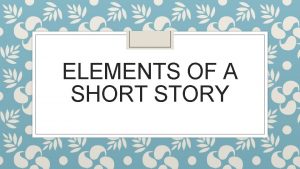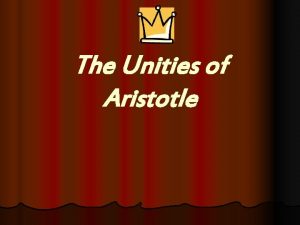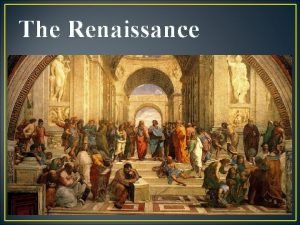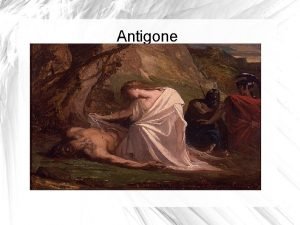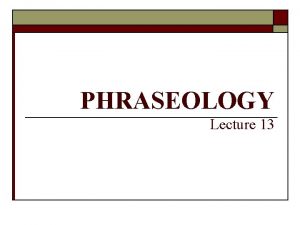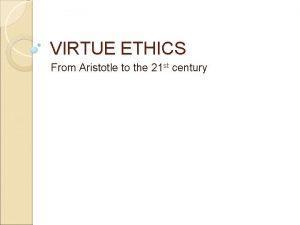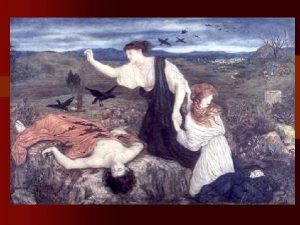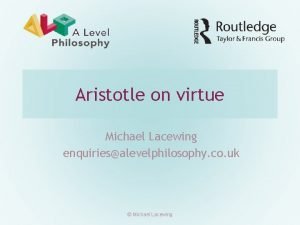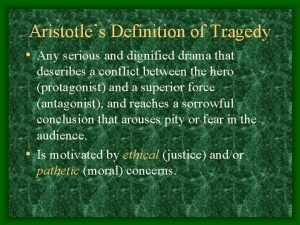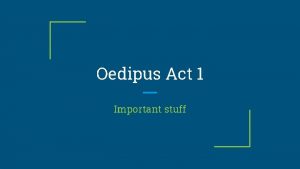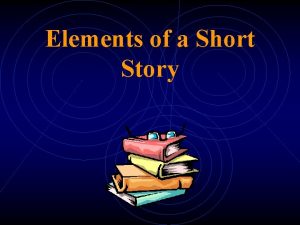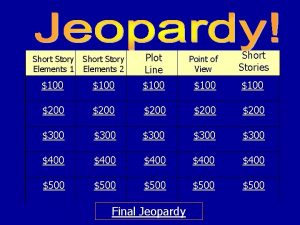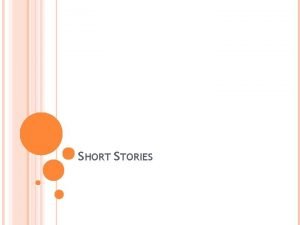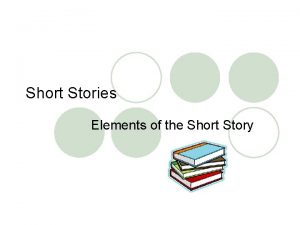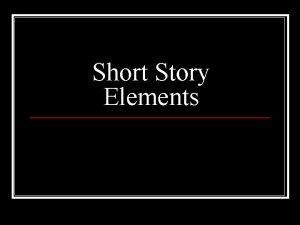ELEMENTS OF A SHORT STORY Aristotles 3 Unities










- Slides: 10

ELEMENTS OF A SHORT STORY

Aristotle’s 3 Unities: ◦ The 3 unities are rules for drama taken from a passage in Aristotle’s Poetics, and are still used as a guideline for the creation of short stories. (think: TAP) Unity of time: The action unfolds over no longer than a day (24 hours) Unity of action: There is one main action, with no, or few, subplots. Unity of place: The action takes place in a single physical space, and does not try to condense spaces. (a street, a forest, a room) Characteristics: The short story is intended to create a single impression (suspense, horror, mystery, fear, humour, pathos, wonder, etc. ) Every detail of character, conflict, etc creates one main impression – a unity of effect. Every word counts.

Few characters : ◦ rarely more than six, with one or two main ones. ◦ only characters essential to the plot are introduced (others may be mentioned) ◦ characters are revealed, not developed. Well-defined plot: moves from inciting incident to climax quickly; falling action may be short or nonexistent.

Parts of a short story: 6 Title: should be brief, arresting, and a key to the story. should suggest the nature of the conflict should introduce the setting and characters. 1. Introduction: 2. Inciting 5 7 4 8 4 1 2 3 should arouse the readers interest Incident: the first step in the plot (rising action). 3. Rising Action: the series of related events (crisis) that take place, leading to the climax 4. Crisis/es: the problems encountered 5. Major Crisis: The event that leads to the climax 6. Climax: The peak of the rising action. 7. Falling Action: may be very short or non-existent in a short story; ties up the “loose ends” 8. Conclusion: restates theme or moral of the story.

Types of Conflict: ◦ Person versus Person ◦ Person versus Self ◦ Person versus Nature ◦ Person versus Society ◦ Person versus Fate

Literary Style: ◦ Diction (vocabulary ◦ Syntax (sentence length and structure) ◦ Punctuation ◦ Choice and arrangement of words ◦ Sound and rhythm ◦ Use of literary devices

Characterization: ◦ Direct: the author tells the reader what the character is like. ◦ Indirect: the reader draws his/her own conclusions from: ◦ Name ◦ Appearance ◦ What the character says ◦ What the character thinks ◦ What other people think about the character ◦ How animals react to the character ◦ The character’ actions

Theme ◦ The “big idea” ◦ The central/main idea of the story ◦ The author’s possible message (ex: what is the author revealing about love? ) ◦ What we infer from the story ◦ Thoughts on life and humanity ◦ Universal truths ◦ Explicit vs. implicit ◦ Title of the work

Point of View: ◦ The relationship between narrator and story. ◦ First Person (narrator is a character in the story) ◦ Third Person Omniscient (knows all, sees all, reveals all) ◦ Third Person Limited (knows and reveals one character’s thoughts and feelings, but is not the character. ) ◦ Third Person Objective (sees all, observes – like a roving camera)

Setting – Where (place) and When (time) ◦ Location/culture ◦ Time period (past, present, future) ◦ Time of day (morning, night, etc. ) ◦ Weather ◦ Landscape/architecture ◦ Emotional/internal
